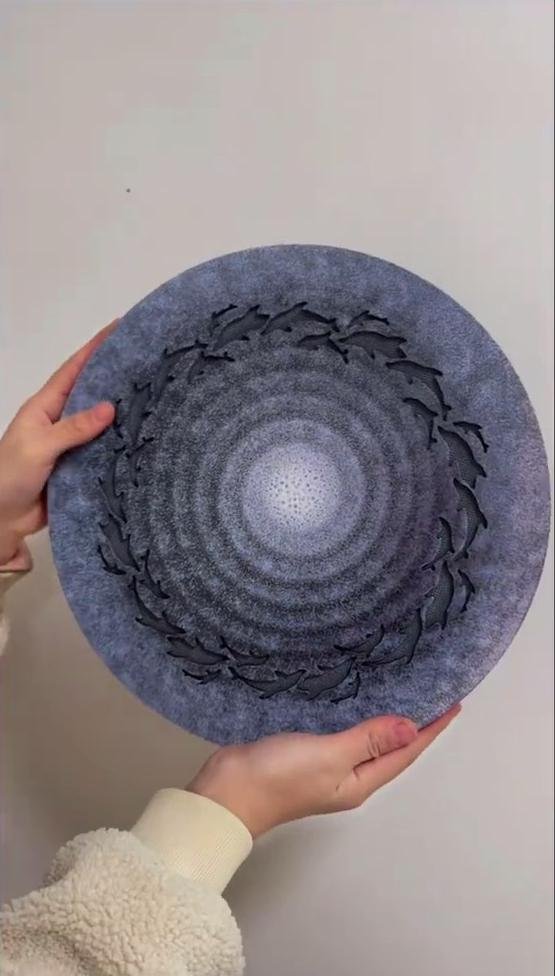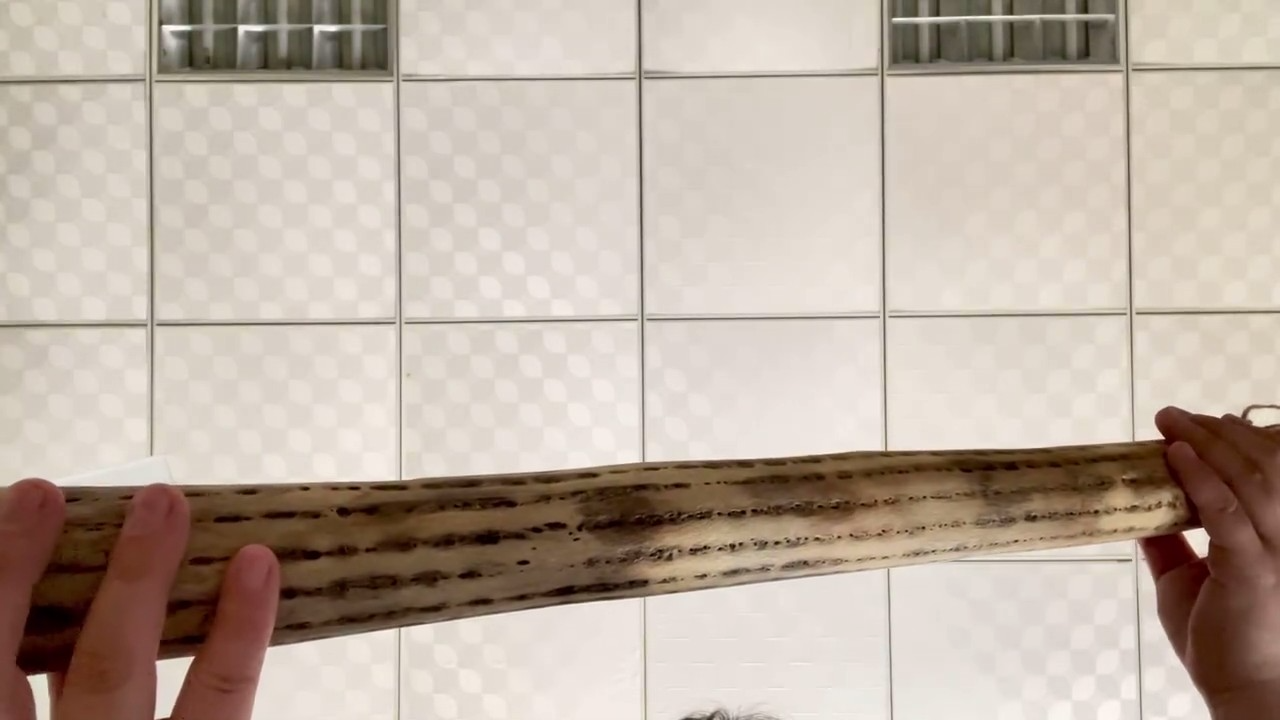Rain sticks represent one of the most fascinating instruments in the percussion family, creating remarkably realistic rainfall sounds through ingenious mechanical design and natural acoustic principles. These captivating instruments transform simple materials into sophisticated sound generators that produce continuous, flowing sounds reminiscent of gentle rainfall, heavy downpours, or trickling water streams, depending on how they are manipulated and played.
Unlike conventional percussion instruments that create discrete impacts or sustained tones, rain sticks generate complex soundscapes filled with countless tiny impacts that blend together into flowing acoustic textures. The unique construction enables players to control the density, intensity, and duration of these cascading sounds, creating everything from subtle ambient textures to dramatic acoustic effects that enhance musical performances, meditation practices, and therapeutic applications.
The versatility of rain sticks extends far beyond simple sound effects, encompassing applications in professional music production, educational settings, therapeutic interventions, and artistic installations. Their intuitive operation makes them accessible to players of all skill levels while their sophisticated acoustic possibilities satisfy demanding professional applications requiring precise control over complex sound textures.
Construction Design and Product Classification
Basic Structural Components
The main tube body forms the fundamental structure of every rain stick, serving as both the resonating chamber and the pathway for internal particle movement. The tube material significantly influences the overall acoustic character, with different materials producing distinct tonal qualities and projection characteristics. Hollow cylindrical construction provides optimal internal volume while maintaining structural integrity necessary for reliable long-term operation.
Tube diameter affects both the acoustic characteristics and the practical handling of the instrument. Wider tubes accommodate larger internal volumes that enable longer sound durations and more complex particle interactions, while narrower tubes create more focused sound streams with enhanced projection. The diameter also influences the ergonomics of handling, with larger tubes requiring different grip techniques and playing approaches compared to smaller instruments.
Length represents the primary factor determining sound duration and acoustic complexity, with longer tubes enabling extended cascading effects that can sustain for many seconds or even minutes. The relationship between length and acoustic output follows predictable patterns, with each doubling of length approximately doubling the potential sound duration. However, practical considerations like portability and handling convenience often limit maximum practical length for most applications.
Wall thickness influences both acoustic projection and structural durability, with thicker walls providing enhanced resonance and projection while thinner walls create more intimate sound characteristics. The material properties interact with wall thickness to determine overall acoustic efficiency and tonal characteristics. Optimal wall thickness balances acoustic performance with practical considerations like weight and manufacturing cost.
Internal barrier systems create the acoustic magic that transforms simple particle movement into complex rainfall sounds. These barriers interrupt the free fall of internal particles, creating multiple cascading stages that generate the characteristic rainfall acoustic texture. The design, spacing, and material of these barriers fundamentally determine the instrument’s acoustic character and playing characteristics.
Filling Material Types and Characteristics
Natural seed fillings provide organic acoustic qualities that many players find particularly appealing for their warm, natural sound characteristics. Different seed types create distinct acoustic signatures, with larger seeds producing more defined individual impacts while smaller seeds create smoother, more continuous sound textures. The natural variation in seed sizes creates organic complexity that prevents monotonous repetition.
Rice grains offer excellent acoustic properties with consistent size distribution that creates smooth, even sound textures. The small size enables dense packing that produces continuous sound streams with minimal gaps or irregularities. Rice filling responds well to subtle manipulation techniques while providing reliable acoustic output across various playing styles and environmental conditions.
Small stones or pebbles create brighter, more articulated sounds with enhanced projection and clarity. The harder material generates more defined impacts with increased harmonic content that cuts through ambient noise effectively. Stone fillings work particularly well for applications requiring clear acoustic definition and maximum projection in challenging acoustic environments.
Glass beads provide exceptionally pure acoustic characteristics with consistent size and shape that creates predictable sound patterns. The smooth surface reduces friction while the uniform density enables even distribution and consistent acoustic output. Glass bead fillings offer excellent acoustic clarity while maintaining smooth sound flow characteristics.
Metal particles create brilliant, penetrating sounds with maximum projection and harmonic richness. Small metal beads or pellets generate bright, clear impacts with extended harmonic content that provides excellent acoustic definition. However, metal fillings may create overly harsh sounds for some applications, particularly those requiring gentle or meditative acoustic qualities.
Synthetic materials offer controlled acoustic properties and consistent performance characteristics that appeal to professional applications requiring predictable results. Plastic beads, synthetic granules, and engineered particles can be manufactured to precise specifications that optimize acoustic performance for specific applications while providing enhanced durability and environmental resistance.
Size Classifications and Acoustic Ranges
Small portable rain sticks measuring 6-12 inches provide compact solutions for personal use, travel applications, and situations requiring discrete sound production. These instruments excel in creating short-duration rainfall effects with rapid onset and quick decay characteristics. The compact size enables easy handling and storage while providing sufficient acoustic output for intimate settings and close-proximity applications.
Despite their modest dimensions, quality small rain sticks can produce remarkably complex and satisfying sound textures that demonstrate sophisticated acoustic design principles. The reduced internal volume requires careful optimization of particle density and barrier design to achieve optimal acoustic performance within space constraints. Small instruments often feature higher particle densities to compensate for reduced internal volume.
Medium-sized rain sticks ranging from 12-24 inches represent the most popular category for general-purpose applications, offering balanced acoustic performance with practical convenience. This size range provides extended sound durations with moderate handling requirements that suit most players and applications. The increased internal volume enables more complex particle interactions while maintaining manageable dimensions for regular use.
Medium rain sticks typically offer the best compromise between acoustic complexity and practical considerations, making them ideal choices for educational applications, therapeutic settings, and general musical use. The extended sound duration capabilities enable sophisticated musical phrases while the moderate size remains comfortable for extended playing sessions.
Large professional rain sticks exceeding 24 inches create impressive acoustic displays with extended sound durations and complex internal acoustic interactions. These substantial instruments can produce rainfall effects lasting many seconds or even minutes, creating immersive acoustic environments that fill large spaces with rich sound textures. The increased internal volume enables complex particle cascade patterns that generate sophisticated acoustic complexity.
Professional-grade large rain sticks often incorporate advanced internal barrier systems and optimized particle distributions that maximize acoustic performance. The substantial construction requires robust materials and careful engineering to ensure structural integrity while maintaining optimal acoustic characteristics. Large instruments provide maximum acoustic impact for professional performance and installation applications.
Playing Techniques and Operation Methods
Basic Operation Techniques
Fundamental tilting techniques form the foundation of rain stick performance, requiring smooth, controlled movements that allow internal particles to cascade naturally through the barrier system. The angle of tilt directly influences the speed of particle flow and consequently the density and intensity of the resulting sound. Gentle tilting creates sparse, delicate sounds while steeper angles produce more intense, dramatic effects.
The speed of tilting movements significantly affects acoustic characteristics, with slow movements creating gradual, peaceful sound development while rapid movements generate sudden, intense acoustic events. Skilled players develop sensitivity to the relationship between movement speed and acoustic output, enabling precise control over sound timing and intensity. Consistent tilting speeds create predictable acoustic patterns while varying speeds add dynamic interest.
Complete inversion techniques involve rotating the rain stick through 180 degrees to reverse the direction of particle flow and restart the cascading process. The transition through vertical positioning temporarily interrupts particle flow, creating natural phrase boundaries and enabling rhythmic control. Sequential inversions create repeating acoustic cycles that can establish musical rhythms and patterns.
Partial tilting techniques enable subtle acoustic control by limiting the angle of rotation to create controlled particle flow rates. These techniques prove particularly valuable for creating gentle background textures and ambient soundscapes where full inversions might create overwhelming acoustic intensity. Partial tilting requires precise control and sensitivity to achieve consistent results.
Advanced Manipulation Methods
Shaking techniques supplement tilting movements to create additional acoustic textures and effects that expand the instrument’s expressive capabilities. Gentle shaking while particles cascade adds rhythmic complexity and textural variation to the basic rainfall sound. The amplitude and frequency of shaking movements affect the character of these additional sounds, enabling creative acoustic manipulation.
Controlled shaking without tilting creates distinct percussive effects using the internal particles as impact elements against the tube walls and barriers. This technique transforms the rain stick into a conventional shaker instrument while retaining access to cascading effects through subsequent tilting movements. The combination of shaking and cascading techniques enables complex acoustic layering.
Tapping and striking techniques utilize the tube body as a resonating surface for additional percussive effects that complement the internal particle sounds. Different striking locations produce varying tonal characteristics, with strikes near the ends creating different sounds compared to center strikes. The tube material and construction significantly influence the acoustic results of striking techniques.
Impact intensity control enables a wide range of percussive effects from subtle finger taps to forceful hand strikes. Light tapping creates gentle accent sounds while maintaining the delicate character of cascading particles, while stronger impacts produce dramatic percussive punctuation that can provide rhythmic structure and dynamic contrast in musical applications.
Rhythm and Timing Control
Timing intervals between inversions create rhythmic structures that transform the rain stick from a simple sound effect device into a legitimate musical instrument capable of maintaining steady tempos and complex rhythmic patterns. Consistent inversion timing establishes metric frameworks that support musical development and ensemble coordination.
Accelerando and ritardando techniques involve gradually changing the timing intervals between inversions to create musical phrases with dynamic forward motion or relaxing conclusions. These techniques require precise timing control and musical sensitivity to achieve effective results that enhance rather than disrupt musical flow. Gradual tempo changes create natural musical expression.
Syncopated timing patterns introduce rhythmic complexity by placing inversions at unexpected metric positions, creating acoustic accents that conflict with underlying pulse structures. These advanced techniques require strong rhythmic skills and musical understanding but enable sophisticated musical expression that elevates rain stick performance beyond simple sound effects.
Polyrhythmic applications using multiple rain sticks enable complex rhythmic layering with different instruments maintaining independent rhythmic patterns that interact to create sophisticated composite rhythms. This approach requires careful coordination and musical skill but opens advanced musical possibilities for ensemble performance and complex acoustic texturing.
Application Scenarios and Practice Methods
Musical Performance Applications
Solo performance techniques transform rain sticks into complete musical instruments capable of sustaining audience interest through varied acoustic textures, rhythmic patterns, and dynamic expression. Effective solo performance requires developing a vocabulary of techniques and sounds that provide sufficient variety and interest to maintain engagement throughout extended presentations.
Stage presence and visual appeal become crucial elements in rain stick performance since the physical movements required for sound production create inherent visual interest. Skilled performers develop graceful, purposeful movements that enhance rather than distract from the acoustic presentation while maintaining precise technical control over sound production.
Ensemble integration requires understanding how rain stick sounds interact with other instruments in mixed musical settings. The continuous nature of rain stick sounds provides excellent textural foundation for other instruments while the rhythmic possibilities enable meaningful participation in ensemble rhythm sections. Careful attention to dynamics and timing ensures effective integration without overwhelming other musical elements.
Improvisation skills enable performers to respond spontaneously to musical situations while maintaining technical control and musical coherence. Rain stick improvisation involves real-time decision making about timing, intensity, and technique selection that requires both technical facility and musical sensitivity. Developed improvisation skills enable meaningful participation in jazz, world music, and experimental musical contexts.
Recording applications require understanding how rain stick sounds translate through recording and playback systems. The complex frequency content and spatial characteristics of rain stick sounds can challenge recording equipment and mixing techniques. Professional recording applications often benefit from specialized microphone placement and signal processing that captures and enhances the instrument’s unique acoustic characteristics.
Meditation and Therapeutic Applications
Personal meditation support utilizes the gentle, flowing sounds of rain sticks to create peaceful acoustic environments that support contemplative practices and stress reduction. The natural, organic quality of rainfall sounds provides non-intrusive background textures that mask distracting environmental sounds while promoting relaxation and inner focus.
Breathing synchronization techniques coordinate rain stick manipulation with controlled breathing patterns to enhance meditation effectiveness and promote deeper relaxation states. The timing of inversions can guide breathing rhythm while the flowing sounds provide gentle acoustic anchoring that supports sustained attention and concentration.
Group meditation applications employ rain sticks to create unified acoustic environments that support collective practice and shared experiences. The gentle sounds provide common acoustic references that help synchronize group energy while maintaining the peaceful character essential for effective group meditation. Multiple instruments can create rich acoustic layering without creating distraction.
Sleep enhancement applications utilize the soothing acoustic qualities of rain sticks to promote relaxation and support natural sleep rhythms. The resemblance to natural rainfall sounds triggers relaxation responses while the controlled acoustic environment masks disruptive environmental sounds. Extended playing sessions can provide sustained acoustic support throughout sleep transition periods.
Therapeutic intervention applications leverage the calming acoustic properties and tactile engagement of rain stick manipulation to support various therapeutic goals. The combination of gentle sounds and purposeful physical movement provides multi-sensory therapeutic input that can support stress reduction, anxiety management, and emotional regulation. The predictable cause-and-effect relationship between movement and sound provides satisfying therapeutic feedback.
Educational Applications
Early childhood education utilizes rain sticks to develop auditory perception, cause-and-effect understanding, and fine motor coordination through engaging musical play. The immediate acoustic feedback from manipulation helps children understand the relationship between physical actions and sound production while providing enjoyable sensory experiences that support learning engagement.
Music education applications teach rhythm, timing, and ensemble skills through rain stick activities that provide immediate success while building foundational musical concepts. The intuitive operation enables students to achieve satisfying musical results quickly while developing more sophisticated skills through progressive technique development and ensemble participation.
Sensory integration therapy employs rain sticks to provide controlled auditory and tactile stimulation that supports neurological development and sensory processing skills. The predictable sound production combined with purposeful movement provides excellent therapeutic input for individuals with sensory processing challenges or developmental delays.
Special needs education benefits from the accessibility and engagement potential of rain sticks, which require minimal technical skill while providing meaningful musical participation opportunities. The visual, auditory, and tactile elements combine to support multi-sensory learning approaches while the immediate success potential builds confidence and motivation.
Cross-curricular educational applications integrate rain stick activities with science education about weather patterns, geography lessons about different climates, and cultural studies exploring musical traditions from various world cultures. The hands-on nature of rain stick exploration supports experiential learning approaches while the acoustic variety demonstrates scientific principles in engaging ways.
Maintenance and Care Guidelines
Routine Care and Cleaning
External cleaning procedures maintain aesthetic appeal and prevent accumulation of dirt and oils that could affect handling comfort and visual appearance. Regular cleaning with appropriate materials preserves surface finishes while preventing degradation from environmental exposure and handling residues. The cleaning frequency depends on usage intensity and environmental conditions.
Gentle cleaning materials prevent damage to surface finishes while effectively removing accumulated contaminants. Soft cloths and mild cleaning solutions work well for most surface materials, while abrasive cleaners or harsh chemicals should be avoided to prevent surface damage. Special attention to decorative elements ensures that artistic features remain attractive and intact.
Internal contamination presents unique challenges since rain stick construction typically prevents direct access to internal components. External vibration and rotation can help redistribute settled particles and dislodge minor contamination, while more serious internal contamination may require professional service or complete reconstruction of the instrument.
Inspection procedures identify developing problems early when simple interventions can prevent serious damage or performance degradation. Regular visual examination reveals surface damage, loose components, or other issues requiring attention. Acoustic testing identifies changes in sound quality that might indicate internal problems or component degradation.
Storage and Environmental Protection
Climate control prevents damage from temperature and humidity extremes that could affect structural integrity and acoustic performance. Rapid temperature changes pose particular risks to instruments constructed from natural materials that expand and contract with temperature variations. Stable storage environments minimize these stresses while preserving optimal performance characteristics.
Humidity management protects both structural components and internal filling materials from moisture-related problems. Excessive humidity can cause swelling, warping, or degradation of organic materials while very low humidity may cause cracking or dimensional instability. Moderate humidity levels between 30-50% provide optimal preservation conditions for most rain stick constructions.
Physical protection during storage prevents damage from impacts, compression, or other mechanical stresses that could affect structural integrity or acoustic performance. Protective padding and secure storage containers provide essential protection while allowing air circulation that prevents moisture accumulation and associated problems.
Pest prevention measures protect organic materials from insect damage that could compromise structural integrity or contaminate internal filling materials. Natural pest deterrents avoid chemical treatments that might affect acoustic properties while providing effective protection against common threats to bamboo, wood, and other organic construction materials.
Long-term storage procedures address the special requirements of instruments that may remain unused for extended periods. Proper preparation, protective packaging, and periodic inspection ensure that stored instruments remain in optimal condition and ready for immediate use when needed.
Performance Maintenance and Troubleshooting
Sound quality monitoring involves regular assessment of acoustic output to detect changes that might indicate developing problems or performance degradation. Baseline recordings or detailed performance notes enable objective comparison over time while identifying subtle changes that might escape casual notice but affect professional applications.
Particle redistribution addresses problems caused by settling or clumping of internal filling materials that can affect sound production and create dead zones or irregular acoustic output. Gentle agitation and rotation can redistribute particles while avoiding excessive force that might damage internal barrier systems or create additional problems.
Structural integrity assessment identifies potential problems such as loose joints, developing cracks, or component separation that could affect both safety and performance. Regular inspection enables early detection when simple repairs remain feasible and cost-effective, preventing progression to more serious problems requiring expensive reconstruction or replacement.
Acoustic optimization techniques maximize performance from existing instruments through adjustment of playing techniques, environmental factors, and handling approaches. Understanding how different manipulation methods affect acoustic output enables players to adapt their technique to compensate for minor performance variations or environmental challenges.
Professional service consultation provides expert evaluation and repair capabilities that exceed typical user maintenance abilities. Skilled craftspeople can address complex problems, perform major repairs, and provide performance optimization that restores or enhances instrument capabilities. Professional evaluation also provides authoritative assessment of repair feasibility and cost-effectiveness.
The rain stick stands as one of the most ingenious acoustic instruments ever conceived, transforming simple materials and mechanical principles into sophisticated sound generators capable of creating remarkably realistic natural sound effects and complex musical textures. Through careful attention to construction details, playing technique development, and proper maintenance, these instruments provide years of reliable service while opening unique creative possibilities for musical expression and acoustic exploration.
The accessibility of rain stick operation makes these instruments valuable tools for players of all skill levels while their sophisticated acoustic possibilities satisfy demanding professional applications. From simple sound effects to complex musical performances, rain sticks offer unlimited creative potential for those willing to explore their unique capabilities and develop the skills necessary to unlock their full expressive range.
For practitioners seeking instruments that combine immediate accessibility with long-term growth potential, rain sticks represent ideal choices that provide instant satisfaction while supporting continued skill development and creative exploration. Their unique acoustic character and intuitive operation ensure that rain sticks will continue attracting new players while providing established musicians with fresh creative possibilities that enhance and expand their artistic vocabularies.







